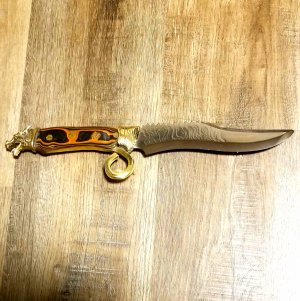Chris Cramer
Super User
I looked up the use of dry ice for blade cryo treatment, and most people just create a dry ice bath using alcohol or acetone mixed with dry ice to transfer the heat from the blade more evenly.



Care to explain that further?The handle is made of synthetic layered fiberglass. The different colored layers create a pattern as you round the edges. I don't know what steel was used, but most forged blades are made from low alloy carbon steel which have much lower properties/ rankings than tool steels, and high carbon stainless steels which make up higher quality knives.
